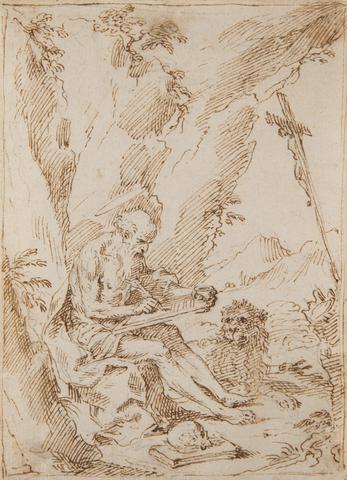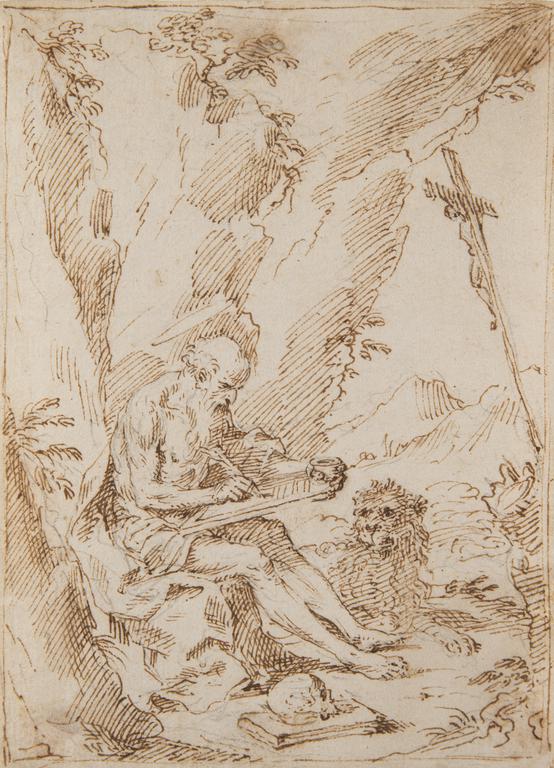
Saint Jérôme pénitent
Bologne premier quart du 17ème siècle
Plume et encre brune sur traits de crayon noir, traits d'encadrement à l'encre brune ; 15 x 11 cm
Provenance :
Munich, Hampel, 1er octobre 2013 ; Paris, collection Le Polyptyque ; Paris, collection privée.
Le dessin frappe par son extrême qualité, la concision et la sûreté du trait, manifestes dans la caractérisation de la tête, où rides et ombres participent d’un même jeu de lignes tandis que la lumière et le front lisse et haut ressortissent à la réserve du papier. Un beau dessin parle : celui-ci dit l’âge et la concentration du saint (et peut-être de l’artiste se projetant dans son dessin), la confiance apaisée du lion, la chaleur de l’après-midi.
C’est aussi un dessin très équilibré, calculé. Au point précis où la roche passe à l’arrière du saint, son vêtement semble la prolonger et y sculpter ses plis. L’ellipse de l’auréole tranche magistralement sur la roche. Le crucifix barre exactement l’horizon (et métaphoriquement, l’horizon mental du saint), grâce à l’artifice consistant à le fixer à une souche de bois mort – tandis que de la roche où s’abrite Saint Jérôme, la végétation repart. D’abord esquissé à la pierre noire, le dessin s’achève par un trait d’encadrement.
Son style dénote un artiste formé à l’école des Carracci, particulièrement d’Agostino Carracci, mais annonçant le classicisme élégant de Guido Reni. De ce dernier, le Saint Jérôme (1635) du Kunsthistorisches Museum de Vienne présente une disposition inverse mais comparable, avec une ouverture sur laquelle se détache l’ange blond qui l'inspire. Saint Jérôme y écrit dans un livre et non, comme ici par un souci rare et remarquable de vraisemblance, sur une tablette.
